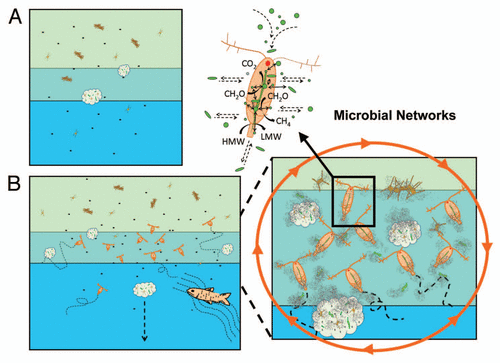Figures & data
Figure 1 Different conceptual views of the aquatic microbial ecosystem. In the traditional view (A), bacterial communities are mainly dominated by free-living bacteria and attached bacterial communities in microniches are rather isolated from each other. Water column stratification also limits exchanges of bacteria between water layers. In our proposed microbial networks (B), free-living and attached bacteria are tightly linked with each other via a network of microhabitats represented here by aggregates, fecal pellets, plankton and higher organisms. Mobile organisms also effectively transport bacteria over long distances and across boundaries. Within a microhabitat, such as a copepod, dense populations of diverse bacteria can closely communicate and exchange genetic information with each other, be protected from external hazards, exploit high concentration of organic matters and drive biogeochemical reactions that are otherwise not favored in the surrounding water.
